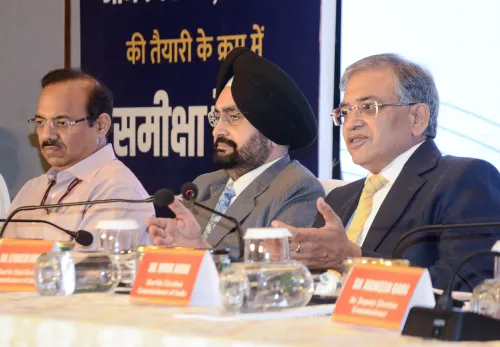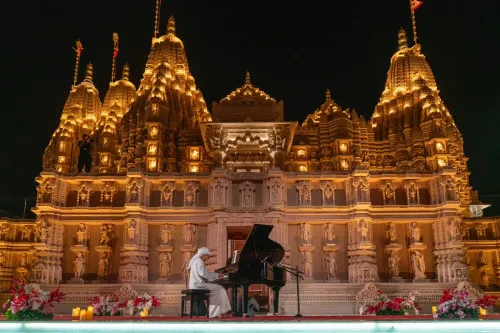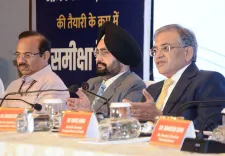How Can Kodaikanal Observatory's Century-Long Data Predict Solar Storms?

Synopsis
Key Takeaways
- Kodaikanal Solar Observatory has provided valuable data for over a century.
- Research aims to predict solar storms that may impact technology.
- Advanced algorithms help in identifying solar features.
- Collaboration across multiple international research institutions.
- The dataset is publicly accessible for further research.
New Delhi, Nov 19 (NationPress) A team of researchers from the Aryabhatta Research Institute of Observational Sciences (ARIES) has introduced a groundbreaking technique to reconstruct the Sun’s polar magnetic behavior over the last century. This was achieved through the analysis of historical solar images from the Kodaikanal Solar Observatory (KoSO), as announced by the government on Wednesday.
Heading the project, Dibya Kirti Mishra from ARIES collaborated with experts from the Indian Institute of Space Science and Technology, the Southwest Research Institute in the US, Germany’s Max Planck Institute for Solar System Research, and INAF Osservatorio Astronomico di Roma, successfully estimating the Sun’s polar field throughout the past century.
The Ministry of Science and Technology highlighted that comprehending the Sun’s magnetic behavior enables scientists to forecast solar storms, which could potentially harm satellites, interrupt GPS services, and even incapacitate power grids.
Furthermore, the KoSO archive serves as a substantial data resource for AI/ML applications, as over a century of observations have been digitized into images, according to the Ministry.
By integrating this historical data with recent observations from Italy’s Rome-PSPT, the research team employed advanced feature identification algorithms to pinpoint small bright features near the Sun’s poles, referred to as the polar network, which facilitated the estimation of the solar polar field.
The researchers noted that the polar network acts as a strong “proxy”, representing the strength of the polar field. They utilized this reconstruction to assess the strength of the ongoing Solar Cycle 25.
At KoSO, solar astronomers commenced their observations of the Sun in a specialized wavelength known as Ca II K as early as 1904. This wavelength captures the chromospheric activity of the Sun.
The study of this region, characterized by bright patches called plages and networks resulting from magnetic activity, has unveiled the mysteries of solar magnetism for over a century.
Located in Bangalore, KoSO operates as an autonomous institute under the Department of Science & Technology (DST), Government of India.
The entire dataset, which includes the reconstructed polar field and the Polar Network Index (PNI) series, is available to the public on GitHub and Zenodo.









